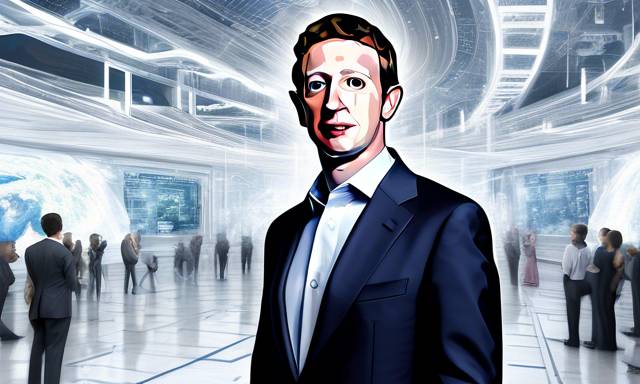Overview of the Semiconductor and AI Landscape 🖥️
The semiconductor sector, particularly Nvidia, has maintained a significant upward trajectory over the years. However, there are ongoing doubts regarding its potential for sustained growth. Some analysts express concerns that the surge in the artificial intelligence (AI) field might be an unsustainable bubble. Recently, Mark Zuckerberg of Meta Platforms presented insights that may support the optimistic perspective surrounding Nvidia and its role in the AI revolution.
The Role of Hardware Infrastructure in AI 🌟
During a notable interview on September 25, Zuckerberg articulated the crucial relationship between the ongoing AI surge and the need for robust hardware infrastructure, which Nvidia specializes in providing. He emphasized that the future success of AI technologies hinges significantly on the capabilities of hardware systems required for training AI models, which are progressing rapidly this year.
Hardware Developments Boost AI Training ⚙️
Zuckerberg highlighted impressive advancements in the infrastructure necessary for AI training, particularly through the evolution of their Llama AI platform. He shared that Llama 3 used approximately 10,000 to 20,000 GPUs for training, whereas Llama 4 required about 100,000 GPUs. Plans for Llama 5 envision an even more extensive upscaling of resources.
- Increased GPU usage underscores the trend towards higher-quality AI models.
- Nvidia remains a critical player in the equipment supply chain that supports AI’s ambitious development.
Investments in Future Infrastructure 💰
Zuckerberg expressed a cautious optimism, noting that although the future remains uncertain, he is confident about the technology sector’s growth. He stated that Meta is making substantial investments, amounting to hundreds of billions, in infrastructure that is anticipated to expand in the coming years.
“We’re making these bets on the necessary infrastructure for future growth. I believe that this scaling will continue, but there remain significant unanswered questions in the field.”
Concerns About Potential Growth Plateaus 📉
Despite expressing optimism, Zuckerberg highlighted a potential challenge to continued growth: the possibility of hitting a plateau in scaling efforts. This concept parallels the “great filter” notion, which pertains to the existential limits on a species’ ability to advance technologically. Zuckerberg does not envision this plateau on the immediate horizon, but he acknowledges the difficulty in estimating its arrival.
- If technological growth stagnates, it will affect stock performance.
- Investors would need to evaluate stock valuations against their perceived potential for growth.
Investor Sentiment Towards Technological Evolution 🚀
Looking beyond hypothetical future concerns, many leading investors remain optimistic about sustained technological advancement. Following OpenAI’s founder Sam Altman’s call for significant investments in AI infrastructure, a coalition of major corporations formed an alliance with a commitment of around $100 billion for technology enhancement this year.
- Key members of this coalition include Microsoft, BlackRock, and entities from Abu Dhabi.
- Nvidia is also supporting this effort as a critical advisor in developing data centers and manufacturing facilities.
Hot Take on AI and Semiconductor Markets 🔥
The remarks from Zuckerberg shed light on critical dynamics within the AI training landscape, highlighting the integral role that hardware providers like Nvidia play in fostering continued advancements. While there are valid concerns about the potential for growth plateaus, current investments and technological enthusiasm suggest a commitment to support the evolution of AI.
As you look toward the AI sector’s future, staying informed about these developments can be beneficial for understanding the broader market implications.





 By
By
 By
By
 By
By
 By
By
 By
By
 By
By